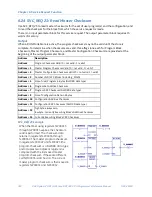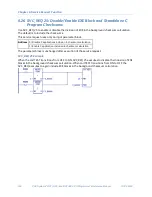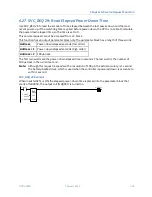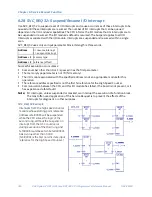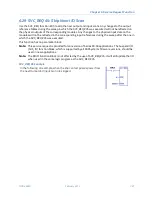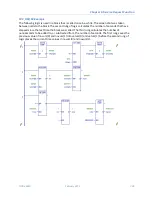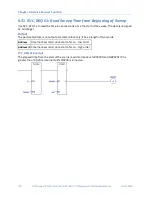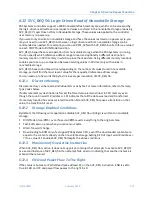
Chapter 6. Service Request Function
320
PACSystems* RX7i, RX3i and RSTi-EP CPU Programmer's Reference Manual
GFK-2950C
The fault text bytes 1
–
24 can be used to pass binary or ASCII data with the fault. If the first byte of
the fault text data is non-zero, the data will be an ASCII message string. This message will then be
displayed in the fault description area of the fault table. If the message is less than 24 characters, the
ASCII string must be NULL byte-terminated. The programmer will display
Application Msg
: and the
ASCII data will be displayed as a message immediately following
Application Msg
:. If the error code is
between 1 and 2047, the error code number will be displayed immediately after
Msg:
in the
Application Msg
: string. (If the error code is greater than 2047, the function is ignored and its output
is set to OFF.)
If the first byte of text is zero, then only
Application Msg
: will display in the fault description. The next
1-23 bytes will be considered binary data for user data logging. This data is displayed in the
Controller Fault Table.
Note:
When a user-defined fault is displayed in the Controller Fault Table, a value of -32768 (8000
hex) is added to the error code. For example, the error code 5 will be displayed as -32763.
SVC_REQ 21 Example
The value passed to IN1 is the fault error code. The value passed in,
16x0057, represents an error code of 87 decimal and will appear as
part of the fault message. The values of the next inputs give the
ASCII codes for the text of the error message. For IN2, the input is
2D45. The low byte, 45, decodes to the letter E and the high byte,
2D, decodes to -. Continuing in this manner, the string continues
with S T O P O and N. The final character, 00, is the null character
that terminates the string. In summary, the decoding yields the
string message E_STOP ON.
Содержание PACSystems RX7i
Страница 357: ......
Страница 466: ...Chapter 9 Diagnostics GFK 2950C February 2018 451...

















